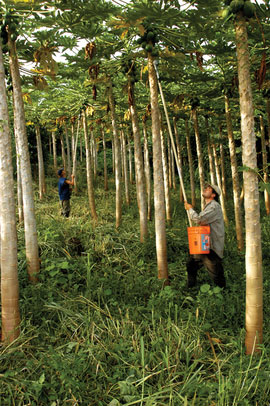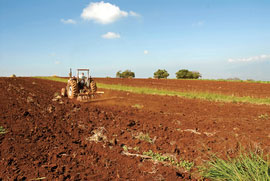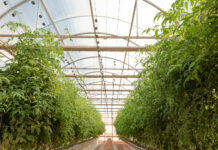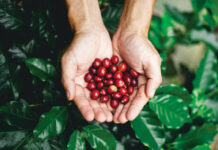
Flourishing agriculture helps maintain the rural feeling and beauty of the island (beloved by residents and visitors alike). It recharges aquifers, as rain seeps into soil rather than running off on asphalt. Increased farm production would cut the carbon costs to the planet of importing from thousands of miles away and give us fresher, more nutritious foods. It would also reduce the threat of alien pests that sometimes arrive in imported produce and add yet another problem for farmers to tackle.
So what’s holding agriculture back?
“I think the biggest long-term need is to develop more water sources, transport and storage,” says Harold Keyser, county administrator for the University of Hawai‘i College of Tropical Agriculture and Human Resources. Persistent drought makes water scarce, but setting up new systems is expensive and complicated by issues like homeowners’ needs and demands from environmentalists to restore stream flow in East Maui.

For Watanabe, the biggest challenge right now is “the cost of production, because everything is petroleum-based,” from diesel fuel for farm equipment, to commercial fertilizers, to the cost of shipping in seeds or sending produce to O‘ahu. As interisland shipping costs rise, the Hawai‘i Farm Bureau (of which the Maui Bureau is a chapter) is hoping to get special consideration for agricultural products.
Scarce labor is another problem. The average farmer today is fifty-five years old, and farm kids are fleeing the land after watching their parents struggle to survive. Hired labor is hard to find; farm wages don’t cover Maui’s pricey housing.





